- Home
- Vince Flynn
The Third Option Page 2
The Third Option Read online
Page 2
“On track. Mitch arrived last night and gave me a full report before I left this morning.”
When Kennedy had briefed the president on the operation earlier in the week, the one thing Hayes had made crystal-clear was that there would be no green light unless Rapp was involved. The closed meeting between the president and Kennedy was one of many they had had in the last five months, all in an effort to harass, frustrate, destabilize, and, if possible, kill one person. That fortunate individual was Saddam Hussein.
Long before President Hayes had taken office, Saddam was a source of irritation to the West, but more recently he had done something that directly affected the fifty-eight-year-old president of the United States. The previous spring, a group of terrorists had attacked the White House and killed dozens of Secret Service agents and several civilians. In the midst of the attack, President Hayes was evacuated to his underground bunker, where he sat for the next three days, cut off from the rest of his government. The siege was ended, thanks to the bold actions of Mitch Rapp and a few select members of the intelligence, law enforcement, and Special Forces communities.
After the attack the United States was left with two pieces of information that pointed to the Iraqi leader. There was a problem, however, with bringing this information to the United Nations or the international courts. The first piece of evidence was obtained from a foreign intelligence service that was none too eager to have its methods exposed to international scrutiny, and the second was gathered through the use of covert action—the third option. How that information was extracted would be deemed reprehensible by all but a few.
In short, they had some very reliable information that Saddam had funded the terrorists, but they could never make the facts public because that would expose their own methods. And as President Hayes had already noted to an inner circle of advisors, there was no guarantee the UN would do anything once it was confronted with the facts. After intense debate by President Hayes, Director Stansfield of the CIA, and General Flood, the chairman of the Joint Chiefs, the three had decided they had little choice but to go after Saddam on a covert level. At its core, that’s what this meeting was all about.
President Hayes leaned forward and placed his coffee mug on the table. He was eager to hear Rapp’s take on the situation in Germany. Hayes had discovered that where others failed, Rapp had a way of making things happen. “What does Mitch think?”
“He thinks that given the short notice and the security around the target, we would be better off opting for a more direct approach.” Kennedy went on to give the president a brief overview of the plan.
When she was finished Hayes sat back and folded his arms across his chest, his expression thoughtful. Kennedy watched him and kept her own expression neutral, just as her boss would do.
Hayes mulled things over for another ten seconds and then said, “What if they did it…” The president stopped because Kennedy was already shaking her head.
“Mitch doesn’t respond well to advice given from three thousand miles away.”
The president nodded. After the White House incident the previous spring, Hayes had read up on Rapp. It was almost always his way or the highway, and while this could be a concern, one could hardly argue with the man’s record of success. He had a history of getting the job done, often when no one else even dared to take it. Hayes suppressed his urge to be an armchair quarterback and instead decided to remind Kennedy of what was at stake.
“Do Mitch and the others know they are on their own?”
Kennedy nodded.
“I mean really on their own. If anything goes wrong, we will deny any knowledge of the situation and of who they are. We have to. Our relationship with Germany could not withstand something like this, nor, for that matter, could my presidency.”
Kennedy nodded understandingly. “Sir, Mitch is good. He’ll have all of his backups in place by this evening, and if things get too tight, he knows not to force it.”
The president stared at her for a moment and then nodded. “All right. You have my authority to go ahead with this, but you know where we stand, Irene. If it blows up, we never had this meeting, and we didn’t have the five or six meetings before, either. You had no knowledge of these events, and neither did anyone else at the Agency.” Hayes shook his head. “I hate to do this to Mitch, but there’s no choice. He is way out there working without a net, and if he falls, we can’t do a thing to help him.”
Rapp had taken a five-mile run around noon, but other than that he had stayed in the cottage the entire day. He needed the jog to stay loose, to take the edge off of all the coffee he had consumed. He had communicated directly with Irene Kennedy several times via a STU III, MX3030 Comsat. The voice-secure satellite phone was his only direct link to Washington. No one else knew he and the Hoffmans were in Germany, and no one could. If the mission went off without a hitch, his masters would need complete deniability, and if the mission fell apart, they would need it even more.
Rapp’s plan for the evening had required certain purchases. Earlier in the day Tom Hoffman had driven into Hamburg with a shopping list. Hoffman had been very careful about where he bought the various items, never buying more than one thing in the same neighborhood and always avoiding store surveillance cameras.
Night had arrived, and Rapp was sitting at the kitchen table with the Hoffmans going over each detail for what seemed like the hundredth time. The Hoffmans were very thorough in this regard. They had come up with a concise tactical operation order, clearly defining the mission down to the last detail. Rapp had worked with enough Special Forces types that he could tell that one or both of them had been with one of the military’s elite units.
All notes would be burned before they left the cottage. The primary, secondary, and third radio frequencies all had to be memorized; the same went for the escape and evasion routes, passwords, and codes. Maps could be carried, but no markings could be made on them. All of their fake credentials were placed in flash bags. If things went really wrong, all they had to do was pull a string on the bag and its contents would be incinerated. Weapons were checked, rechecked, and checked again.
Rapp had a hard time putting his finger on it, but he didn’t have a good feeling about this one. He reminded himself that there had been a mission early in his career about which he had felt great, and before all was said and done, a dozen U.S. commandos were dead. Ever since then he rarely felt confident about any mission, but there was something unusual that was gnawing at him about this one. Rapp could sense that he was losing a little bit of his edge. He had been an angry man for so many years, and he had always used that anger to sharpen his focus.
That anger was born in the aftermath of the Pan Am Lockerbie disaster. At the time, Rapp was attending Syracuse University. Thirty-five of his fellow students had died in the terrorist attack, and one of them was his girlfriend. During this period of intense grieving, Rapp was approached by the CIA. The Agency had dangled the prospect of revenge in Rapp’s face, and he had jumped. The target of that revenge became Rafique Aziz, the person behind the terrorist attack on Pan Am Flight 103. Rapp had spent the last decade hunting the terrorist and had finally come face to face with him the previous spring. Aziz was now dead, and the anger was gone.
It had been replaced with something very different—an emotion Rapp didn’t know he could still feel. Anna Rielly was now his focus, and what he felt for her was the opposite of hatred. She was one in a million. The type of woman who made you want to be a better man, and Rapp desperately wanted to be a better man. He wanted to put his life with the CIA behind him and move on.
Jane Hoffman removed her headphones and announced, “The first guests have arrived.”
Rapp looked at his watch. It was five minutes to eight, about two and a half hours before show time. It was time to check in with Kennedy one more time. Rapp grabbed the COMSAT mobile phone by the handle and carried it to the bedroom.
IF DR. IRENE Kennedy had bothered to look out the window of her seve
nth-floor office, she would have noticed that the fall colors of the Potomac River Valley were at their peak. “ Unfortunately, there hadn’t been much time of late to stop and take in life’s little pleasures. Langley was on shaky ground—under assault from both external and internal forces. Word had leaked that Thomas Stansfield, the director of the CIA, was in poor health. The critics on Capitol Hill smelled blood and were on the move, and from within the Agency, massive egos were maneuvering for the directorship. Kennedy, never one to get involved in politics, was doing her best to stay out of the line of fire, but it was proving almost impossible. It was no secret that she and the director were very close.
Washington was a town that loved drama and gossip, and no one loved it more than the politicians. With the delight of brooding Shakespearean characters, they had started their deathwatch. Several of them had gone so far as to call, feigning concern for Stansfield and his children. Kennedy wasn’t naive. Stansfield had taught her well. No one on Capitol Hill liked her boss. Many of the senators and representatives respected him, but none of them liked him. The seventy-nine-year-old director had never let any of them get close enough. As the deputy director of operations and then director of Central Intelligence, Stansfield had been the keeper of Washington’s secrets for more than two decades. No one knew exactly how much he knew, and no one really wanted to find out. Some people were actually worried that he had been building thick dossiers on all of Washington’s elite, so that upon his death he could wreak havoc from the grave.
This was not going to happen. Stansfield’s entire professional life had been centered on keeping secrets. He was not about to break with that. This, of course, was of no comfort to those in Washington who had committed the most egregious sins. It was of no comfort because they couldn’t imagine possessing such valuable information and not using it.
It was painful for Kennedy to cope with the slow death of her mentor, but she had to focus on the job at hand. The Orion Team had been given the go-ahead by the president of the United States to assassinate a private citizen, and not just any private citizen. Kennedy stared at the black-and-white photograph clipped to the dossier on her desk. The man was Count Heinrich Hagenmiller V, a German industrialist and cousin to the Krupp family. The fact that President Hayes was willing to authorize the assassination of a private citizen of one of America’s closest allies spoke volumes about his new commitment to fight terrorism at every level.
Hagenmiller and his companies had first landed on the CIA’s radar screen back in the early nineties. At the time, Kennedy was working on a project known as the Rabta II operation. Rabta II was a worldwide effort by the Agency to prevent Muammar al-Qaddafi from building a facility capable of producing biological, chemical, and nuclear weapons. The operation received its name from the original weapons facility that Qaddafi was building in the late eighties. The plant was located in the town of Rabta in northern Libya. In 1990, just before it was to start production, President Bush threatened to use air strikes and publicly identified the European companies that had helped build the factory. One of those companies was Hagenmiller Engineering.
Rather than see his dream bombed to the ground, Qaddafi closed the plant and began searching for a new place to set up shop. In early 1992, the CIA discovered the site of his new weapons plant. The Libyan dictator was trying to build the plant deep inside a mountain. Once the facility was complete, it would be impregnable to everything except a direct strike by a nuclear warhead.
In an effort to stall the completion of the facility, the CIA launched Rabta II. They identified all equipment, technology, and personnel that would be crucial to the construction of the facility. With the help of its allies, the United States placed an embargo on all the items on the list. But as with all embargoes, Qaddafi and his people found ways around it. Since the inception of the operation, Hagenmiller Engineering and its subsidiaries had popped up several times. Each time they claimed they had no idea whom they were selling their goods to and walked away without even a token fine from the German government. Heinrich Hagenmiller was well connected. With Qaddafi fading from the international scene and seeming to mellow with age, the United States did not press the issue with the German government.
Kennedy flipped through the dossier, looking at a series of photos and the translated conversations that Hagenmiller had had with his newfound business associates. It was this new relationship that most concerned the CIA. Hagenmiller Engineering was, among many things, a manufacturer of high-tech lathes and other engineering components crucial to the building of a nuclear bomb.
On the next page were photos of the count’s various homes. A brownstone in one of Hamburg’s oldest neighborhoods, the family’s estate an hour to the south, and a mountain retreat in Switzerland. Hagenmiller’s family had rich royal roots and a lot of debt. Five months earlier Kennedy had consulted her counterpart in German foreign intelligence, the BFV, and he had told her the United States wasn’t the only country inquiring about the count. He had recently received calls from the Israelis and the British. When questioned by the BFV just three months ago, Hagenmiller had sworn that he would personally oversee the sale of all sensitive equipment.
Kennedy didn’t buy Hagenmiller’s new promise and put him under the microscope. Hackers from the CIA compromised Hagenmiller Engineering’s computer system and looked into the count’s personal finances. A picture began to form of a man who had squandered the family’s fortune. He was on his fourth wife, and the first three hadn’t let him off easy. The heavy costs of maintaining the family’s properties and his jet-setter lifestyle had drained the nest egg.
Two weeks earlier Kennedy had sent a tactical reconnaissance team to Germany to put Hagenmiller under twenty-four-hour surveillance. The team followed the count to Switzerland, and that was when things got really interesting. Kennedy studied a series of photos taken from the woods near Hagenmiller’s mountain retreat. Some of the shots were grainy, but several of them were clear enough to make out the man Hagenmiller was meeting with. He was Abdullah Khatami. Khatami was a general in the Iraqi army, the man in charge of rebuilding its nuclear weapons program. He was also Saddam Hussein’s cousin, and like many of Saddam’s closest followers, he had grown a thick black mustache.
There were more incriminating photos, of Hagenmiller taking a briefcase from Khatami and then shaking hands. After their meeting was concluded, Hagenmiller drove to Geneva with his bodyguards and deposited the money in his bank. The following day the CIA’s hackers got into the bank’s computer system and discovered that five million dollars had been deposited in Hagenmiller’s account.
Kennedy immediately ordered surveillance stepped up and went to the president with the mounting evidence. Hayes was looking for ways to fight Saddam but wanted to be absolutely sure that the count wasn’t being duped. Kennedy’s people found irrefutable evidence the following day. Sources had told them that at eleven o’clock this evening, Hamburg time, a staged breakin would occur at the Hagenmiller Engineering warehouse. Four computerized lathes and a variety of other equipment used in the production of highly sophisticated nuclear components would be stolen and loaded onto a waiting freighter at the German port of Cuxhaven.
Kennedy laid out the evidence before the president. Hagenmiller had already been warned twice and had promised he would personally make sure it didn’t happen again. Despite the warnings and the promise, he was still willing to sell highly sensitive equipment to a person who was the world’s number one sponsor of terrorism and who had sworn to wipe America off the face of the planet if given the chance. Hagenmiller had rolled the dice, and he was about to lose. President Hayes gave Kennedy the go-ahead. He had one requirement, however. With something as delicate as this, he wanted Mitch Rapp to be on the ground calling the shots.
Kennedy’s phone rang, and she picked it up.
“Everything is in place.”
She recognized the voice as Rapp’s. “Give me a quick update.”
Rapp ran down the checklist of dev
elopments and explained the final touches they had added to the plan. Kennedy listened and asked very few questions.
When Rapp was done, he asked, “If I miss him tonight, will I get another chance?”
“I doubt it. The second TRT is in place by the warehouse. As soon as the tangos show up, they will anonymously alert the German authorities and then follow until an arrest is made. Once that happens, the cat will be out of the bag on Hagenmiller, and there will be too many eyes watching him.”
“Yeah, I agree.” The TRT that Kennedy was referring to was a tactical reconnaissance team. They were the ones who had discovered the theft that was to occur at eleven P.M. Rapp knew that they were in place, but they did not know that Rapp was in the country.
Rapp said, “You need to alert us if the tangos move on the warehouse before eleven. The timing on this is crucial. We can’t be pulling up to Hagenmiller’s at the same time the police are on the phone telling him that he’s been robbed. He expects to hear from the authorities tonight, and for the element of surprise, it’s best that we are the first people to contact him.”
“Understood.” There was a moment of silence, and then Kennedy asked, “What’s your gut telling you on this one?”
Rapp gripped the handset and looked around the small bedroom, not sure if Kennedy was asking for the sake of asking or if she really wanted to know. Rapp replied tentatively. “I’m not sure. I would have liked a little more time to prep, but that’s usually the case.”
Rapp didn’t sound like his confident self, and Kennedy picked up on it. “If it doesn’t look good, don’t force it.”
“I know.”
“No one back here is going to second-guess you.”
Rapp laughed quietly. “That’s never worried me before, why would it now?”
“You know what I mean. Just be careful.”
“I always am.” He was on autopilot.
“Anything else?” asked Kennedy.

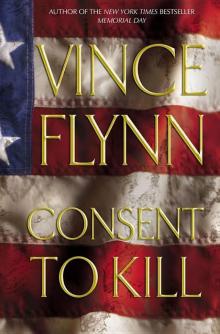 Consent to Kill
Consent to Kill Executive Power
Executive Power Protect and Defend
Protect and Defend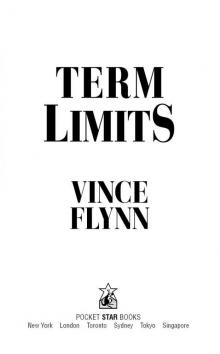 Term Limits
Term Limits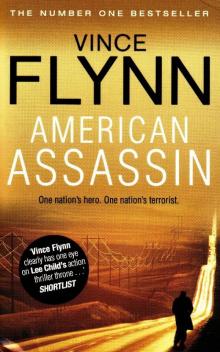 American Assassin
American Assassin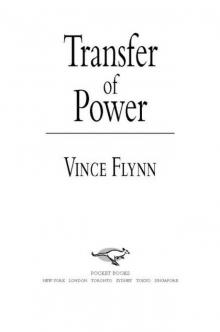 Transfer of Power
Transfer of Power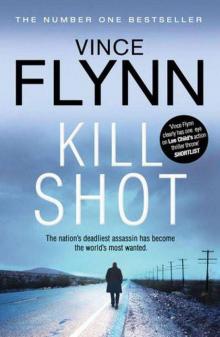 Kill Shot
Kill Shot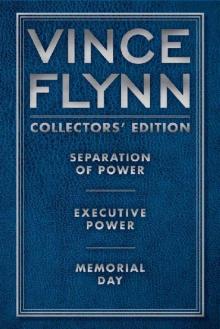 Vince Flynn Collectors' Edition 2
Vince Flynn Collectors' Edition 2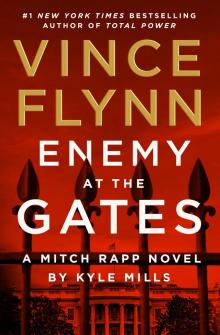 Enemy at the Gates
Enemy at the Gates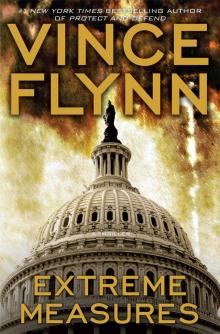 Extreme Measures
Extreme Measures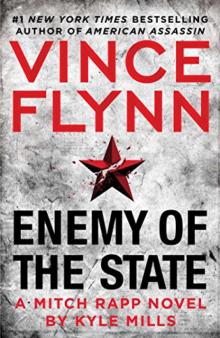 Enemy of the State
Enemy of the State Act of Treason
Act of Treason Pursuit of Honor
Pursuit of Honor The Survivor
The Survivor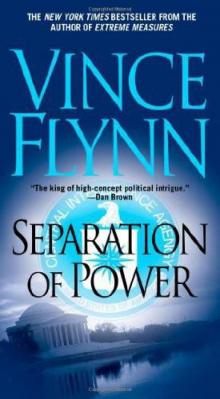 Separation of Power
Separation of Power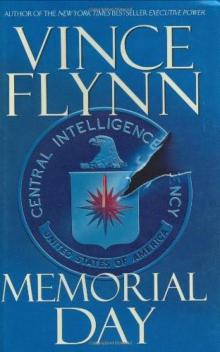 Memorial Day
Memorial Day The Last Man
The Last Man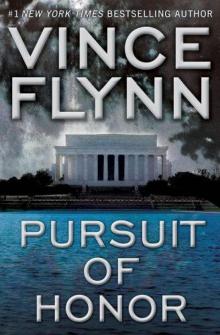 Pursuit of Honor_A Thriller
Pursuit of Honor_A Thriller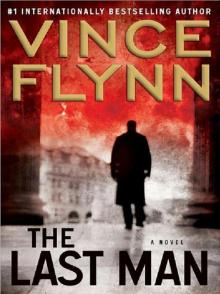 Mitch Rapp 13 - The Last Man
Mitch Rapp 13 - The Last Man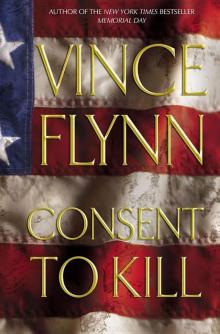 Consent to Kill:
Consent to Kill: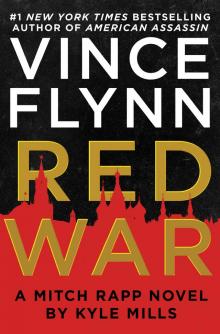 Red War
Red War Mitch Rapp 02 - The Third Option
Mitch Rapp 02 - The Third Option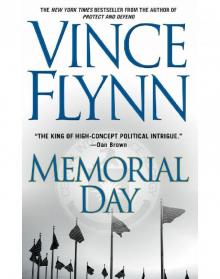 Mitch Rapp 05 - Memorial Day
Mitch Rapp 05 - Memorial Day Mitch Rapp 11 - American Assassin
Mitch Rapp 11 - American Assassin Mitch Rapp 14 - The Survivor
Mitch Rapp 14 - The Survivor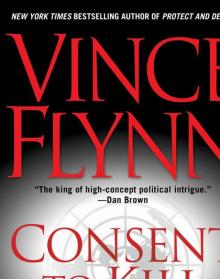 Mitch Rapp 06 - Consent to Kill
Mitch Rapp 06 - Consent to Kill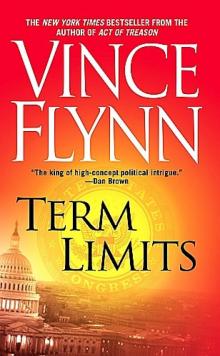 Term Limits mr-1
Term Limits mr-1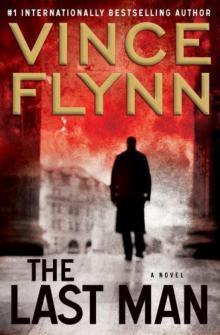 The Last Man mr-13
The Last Man mr-13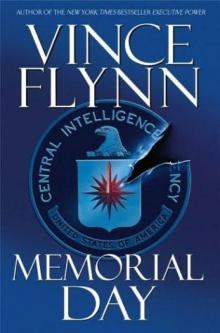 Memorial Day mr-5
Memorial Day mr-5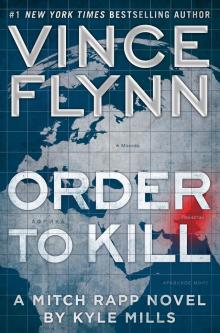 Order to Kill
Order to Kill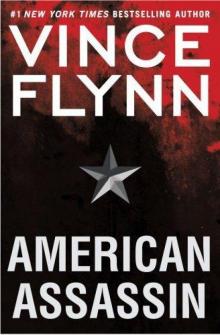 American Assassin: A Thriller
American Assassin: A Thriller Separation of Power mr-3
Separation of Power mr-3